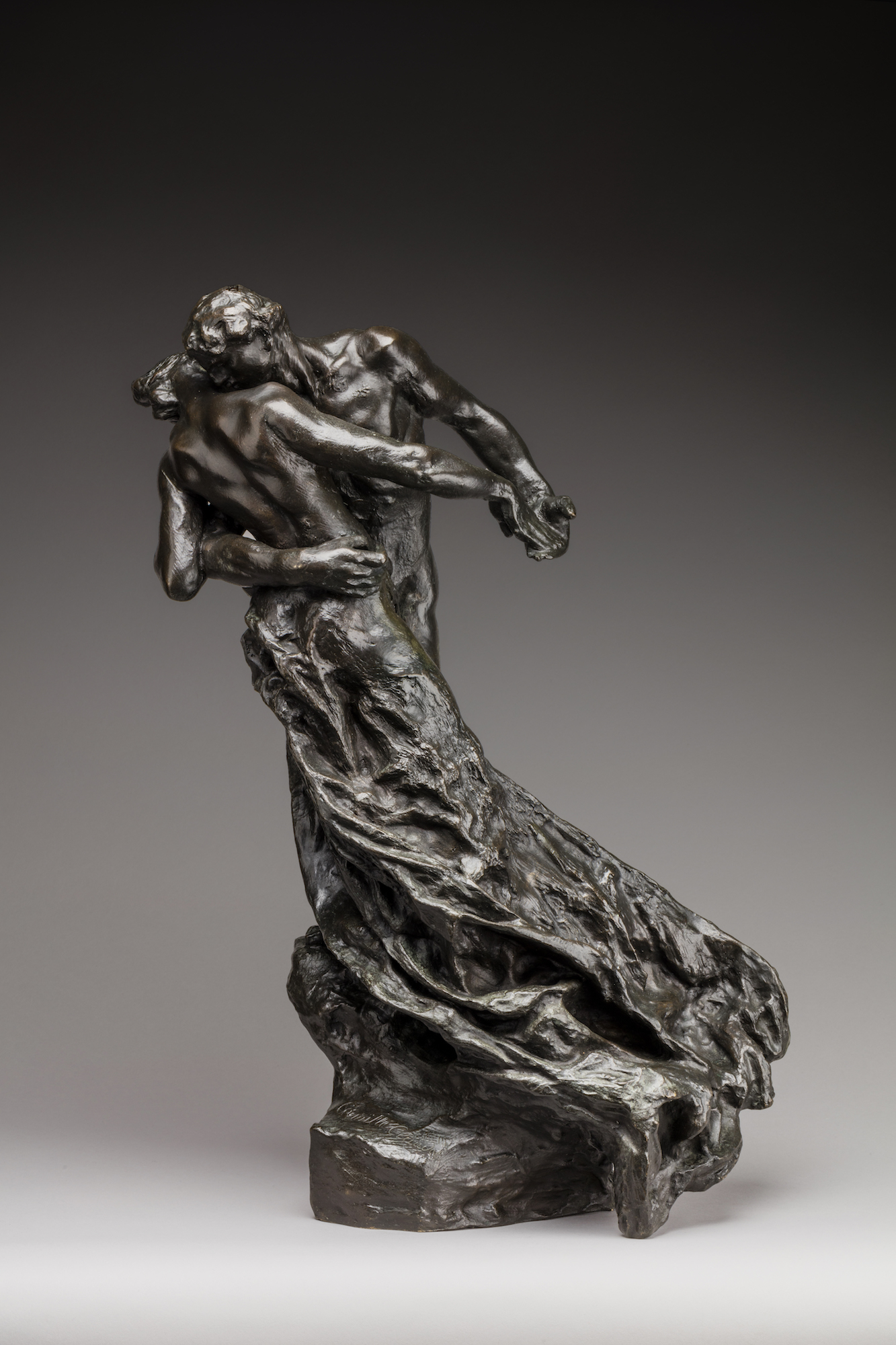
Camille Claudel (18561943) La valse ou Les valseurs Camille claudel sculpture, Camille
Camille Claudel (born December 8, 1864, Villeneuve-sur-Fère, France—died October 19, 1943, Montdevergues asylum, Montfavet, near Avignon) French sculptor of whose work little remains and who for many years was best known as the mistress and muse of Auguste Rodin.She was also the sister of Paul Claudel, whose journals and memoirs provide much of the scant information available on his sister.

FRANCE CIRCA 2000 A stamp printed in France shows the sculpture "The Waltz" by Camille
The Waltz (Allioli), about 1900. Private Collection. Musée Yves Brayer. CHICAGO— The Art Institute of Chicago is pleased to announce Camille Claudel, on view from October 7, 2023 through February 19, 2024. This exhibition is the first comprehensive North American show focused solely on Camille Claudel's work in 35 years.

Camille CLAUDEL (18641943) The Waltz, before 1895. Musée Camille Claudel à NogentsurSeine
The Waltz by Camille Claudel is one of the best artworks ever released. Every detail of the artwork speaks a message. The art is made up of a man and a woman who are embracing each other while doing the waltz dance. Claudel had an employer who was also her mentor. The employer was Auguste Rodin, who had a love affair with Claudel.

Buy The Waltz by Camille Claudel La Valse Contemporary Bronze Sculpture Modern Art Statue
Camille Claudel 's bronze sculpture The Waltz , from a private collection in Paris, belongs to a series of listed casts made from the plaster named after Fritz Thaulow, a Norwegian painter who owned many works by the artist as well as those by Rodin . This version is in the Camille-Claudel Museum in Nogent-sur-Seine.…

The Waltz (Camille Claudel). Official sculpture reproduction from Rodin Museum. Valse
The Waltz or The Waltzers is a sculpture by French artist Camille Claudel. It depicts two figures, a man and a woman, locked in an amorous embrace as they dance a waltz. The work was inspired by Claudel's burgeoning love affair with her mentor and employer Auguste Rodin. Various versions were made from 1889 to 1905, initially modelled in plaster, and later cast in bronze.

Camille Claudel in 5 Famous Sculptures
The Waltz (Allioli), about 1900 Camille Claudel. Private collection. Photo courtesy of Musée Yves Brayer Giganti or Head of a Brigand, modeled about 1885, cast 1885-before 1892 Camille Claudel. Palais des Beaux-Arts, Lille Abandonment (detail), cast about 1905 Camille Claudel. Private collection

La Valse de Camille Claudel focus sur un chefd’œuvre
Description About The Waltz Statue The Waltz statue is one of Camille Claudel's most notable works. The statue portrays a couple spinning in a dance. The Waltz was presented to Salon National des Beaux-Arts by Camille Claudel in 1893. The original statue is presently in France in the Musée Rodin and Camille Claudel. Technical Specifications
.jpg)
Camille Claudel (18641943) , La valse Christie's
The Waltz, Miniature Miniature reproductions €159.00 Tax included 132.50 € HT Available Add to cart favorite_border This miniature is sold in special packaging, a wooden crate used to transport works of art. Camille Claudel (1864-1943)

"La Valse" de Camille Claudel, adjugée 1,18 million d'euros sculpture&collection
Young Roman (1882/83-87) Young Roman, 1882/83-87. Camille Claudel. The Art Institute of Chicago, through prior bequest of Joseph Winterbotham and purchased with funds provided by an anonymous donor, Anne Searle Bent, and Celia and David Hilliard. Claudel began sculpting as a teenager living with her family outside Paris.

The Waltz (Camille Claudel). Official sculpture reproduction from Rodin Museum.1000 Wishlist
Art Camille Claudel's 'Revolt Against Nature' In a new exhibition, the sculptor escapes the shadow of her mentor Rodin, and claims a place as one of the finest artists of her era. By Farah.

Camille CLAUDEL (18641943) La valse, 1893 Valse, Nogent sur seine, La valse
Camille Claudel, The Age of Maturity (first version), 1894-5, plaster (Musée Rodin, Paris) Claudel's first version of the work, made in plaster in 1894-5, depicts a kneeling figure who connects physically with the man. The male figure seems passive, to the point of near collapse, his right arm hanging limply over the shoulders of the old.

Postcard Camille Claudel The Waltz Bronze Musee Rodin Paris France eBay
Camille Rosalie ClaudelFrench pronunciation: [kamij klodɛl]; 8 December 1864 - 19 October 1943) was a French sculptor known for her figurative works in bronze and marble. She died in relative obscurity, but later gained recognition for the originality and quality of her work.

The Waltz Camille claudel, Art, Sculpture art
1 of 5 Summary of Camille Claudel Talented from youth, inspired by nature, and captivated by love, Camille Claudel unlocked the emotive power of sculpture after centuries of its subtleties having been obliterated by excessive polishing and focus on technique.

Camille Claudel, une icône au destin tragique Connaissance des Arts
Behind every great man, there is a great woman. Camille Claudel was the great woman behind the famous Auguste Rodin: the founder of modern sculpture. For many years Camille Claudel's biography was shadowed by that of Auguste Rodin and she was mostly known as his muse and mistress.

Camille Claudel The waltz A Valsa Camille claudel, O escultor, Escultor
The Waltz The Waltz Camille Claudel Bookmark type sculpture year 1895 dimensions 16.9 in 43.0 cm medium Bronze Description In The Waltz, entwined dancers suggest the passionate embrace of a couple. The angle of the bodies, combined with the abundant drapery, accentuates the whirling dance as it creates a light, harmonious rhythm.

The Waltz by Camille Claudel. Two lovers dance a waltz for all eternity. So very romantic
Camille Claudel presented The Waltz at the 1893 Salon National des Beaux-Arts. The sculpture depicts a dancing couple, spinning together on a diagonal axis in a close embrace; the sense of movement is accentuated by the drapery that starts at the female figure's hips and billows out to one side. The male dancer's left foot is raised in the.